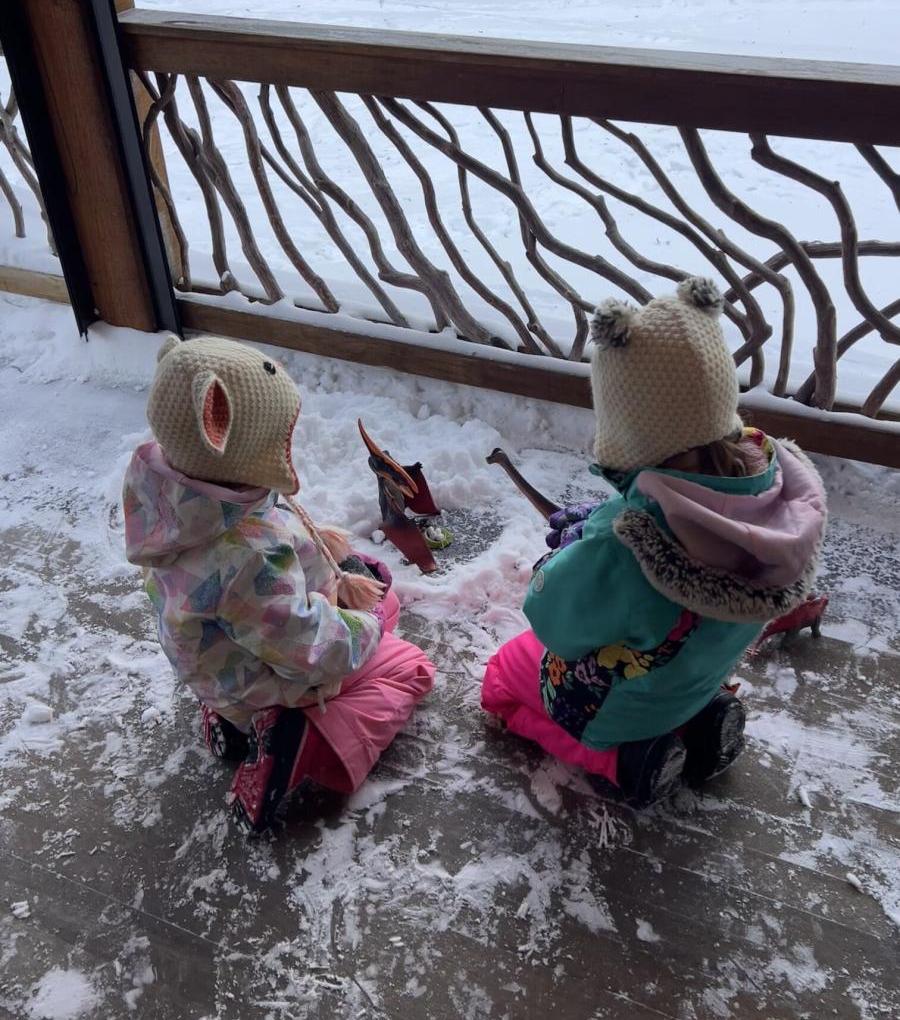As the days grow shorter and the air turns crisp, I’ll be honest, it’s harder for me to get outside as much as I’d like with my kids. Between bundling up and the chilly wind, sometimes it feels tempting to stay cozy indoors. But here’s the thing: even in winter, the natural world outside is full of fascinating secrets just waiting to be discovered.
You don’t have to spend hours outside to reap the benefits of fresh air, curiosity, and hands-on science. Even a quick 15-minute walk or backyard exploration can turn into a mini adventure where kids can think like scientists and notice the magic of winter.
Here are some simple, fun ways to help your child or students explore the small wonders of winter, without freezing their fingers off!
Track Animal Footprints
If there’s snow or even soft mud around, encourage kids to look closely for animal tracks. What made those tiny footprints? Are they from birds, squirrels, or maybe a neighborhood cat? Bring along a simple field guide or use a free app to help identify tracks. You can even try the Animal Tracks Identifier App for free, or the iTrack Wildlife Pro (about $14.99) if you have a child who’s really into tracking. Talking about how animals stay active or find food in winter sparks curiosity about ecosystems and survival.
Observe Frost and Ice Crystals
Winter mornings often bring frosty windows or delicate ice crystals outside. Grab a magnifying glass and take a closer look. What shapes do you see? How do the patterns change in different spots? My daughter likes to call it nature’s glitter, and it’s the perfect way to spark excitement before introducing kids to the science of water, freezing, and beautiful natural designs.
Explore Evergreen Trees and Winter Plants
Evergreens keep their leaves all year round, but deciduous trees lose theirs in winter. Take a walk and compare the textures, colors, and shapes of different trees and plants. Ask your child why some trees might keep their leaves while others don’t. This opens up conversations about adaptations and plant biology. And if you want to dive even deeper, LMU’s Evergreens Mini Unit is a great way to explore these ideas through hands-on activities.
Try Simple Freezing and Melting Experiments
Bring science outdoors by experimenting with water. Fill containers with water and leave them outside to freeze overnight. What shapes does the ice take? What happens if you sprinkle salt on the ice? When the sun comes out, watch how the ice melts and changes. These quick experiments introduce kids to states of matter and temperature effects.
Create a Winter Nature Journal or Art
Encourage kids to bring a notebook and crayons or colored pencils outside. They can sketch trees, tracks, or frost patterns, or jot down observations about the weather and animals. Kids can even sketch by looking out the window. You don’t always have to head outside to enjoy the beauty of nature. Back inside, they can turn their observations into colorful drawings, blending science and creative expression.
Slow Down and Soak in the Season
Winter might seem like a time to slow down, but it’s helpful to think about what we’re slowing down from… busy schedules, constant to-dos, and the rush of everyday life. Taking time to step outside, even for a few minutes, can be a simple way to pause, breathe deeply, and enjoy what winter has to offer. These small moments in nature help kids stay curious all year long and give you a chance to reconnect, too.
So, grab your hats and mittens, and get ready to uncover the winter wonders right outside your door!



